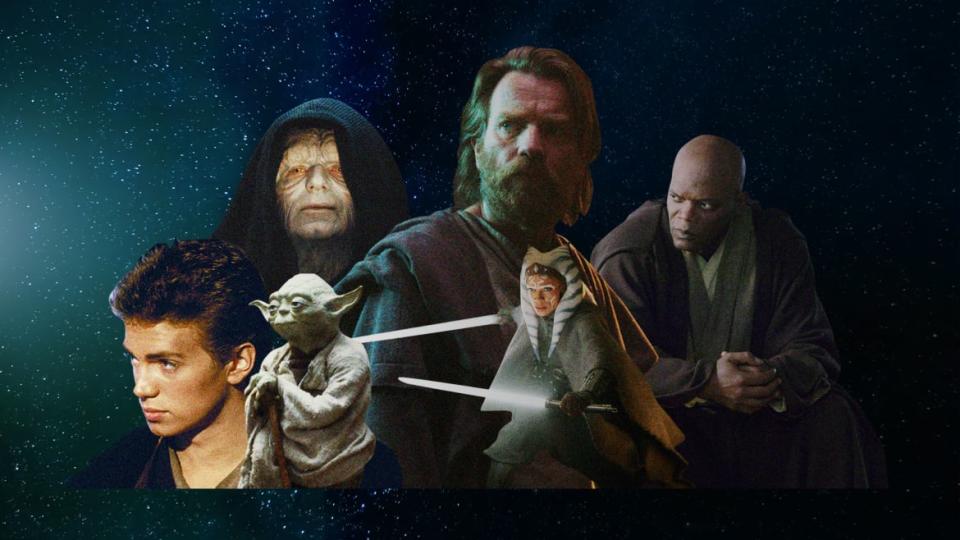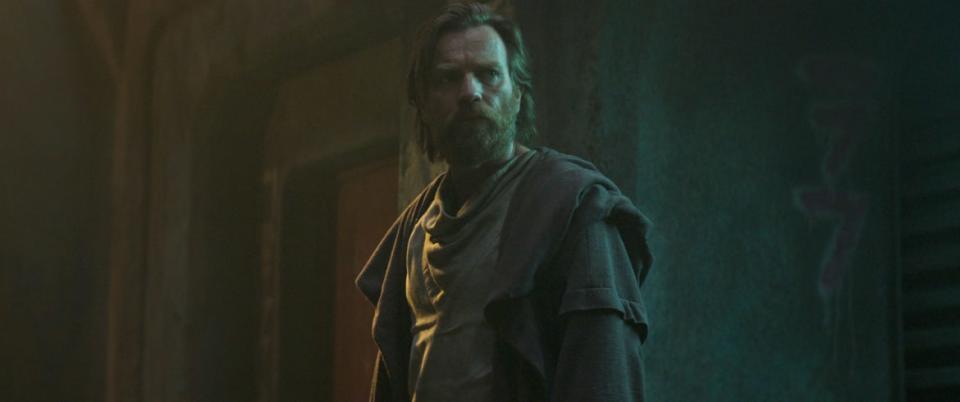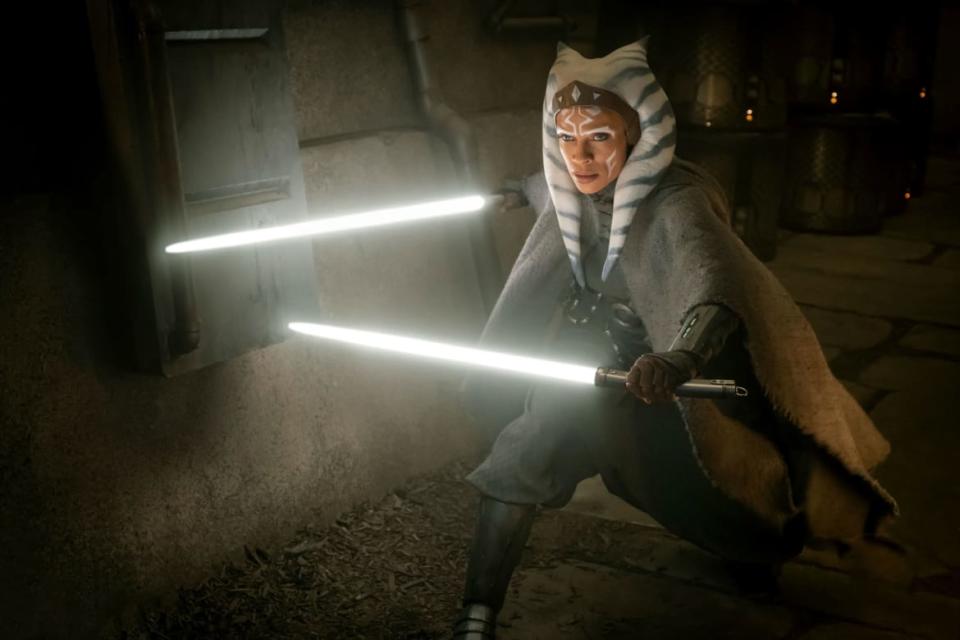It’s Time for Star Wars to Move on From the Jedi

When it comes to Star Wars, even the most casual viewer can tell you that the core of its story is about the balance of good and evil, light vs. dark side. When the balance shifts too far one way, the universe can throw itself into turmoil.
Throughout the franchise’s 45-year history, the Jedi side has always been seen as the good side—the correct one. While the Sith are certainly evil, lead a fascist regime, and are definitively the bad guys, positioning the Jedi as the story’s sole heroes overlook their pretty big faults. It diminishes the fact that they had a part in several of the worst events in Star Wars history: the fall of the Republic, the turning of Darth Vader, and the purging of most of the Jedi in general.
The focus on the small but mighty return of the Jedi in the original trilogy only serves to take away from the hard, tide-turning work of the true heroes of Star Wars: the rebels on the ground. It’s an under-sung facet of the lore that Rogue One hit on so well. Yet that one-off film from 2016 has stood as the one live-action occasion in which Star Wars has celebrated anyone who wasn’t a Jedi as a hero.
Everything You Need to Know About ‘Andor,’ the Newest Star Wars Show
With the debut of Andor last week, the perspective of who really won the war at the end of the original trilogy for the Rebel Alliance should shift even more. The Disney+ series returns to the story of Rogue One, thrusting rebel soldier Cassian Andor (Diego Luna) into the spotlight once again. Andor and its two-season order is a sign that Disney accepts that there’s more to the story than it has focused on thus far, including lightsaber wielders.
The Jedi are purveyors of peace—or at least, they’re supposed to be. They were created to be a sort of coalition of space sheriffs, guardians who kept justice and balance in the galaxy while upholding the Light Side. We even see this with their weapon of choice, the lightsaber, which is only fatal if puncturing an organ or decapitating; the lightsaber’s design cauterizes any other wound, making it so the victim doesn’t bleed out.
But while no organization is perfect (especially pseudo-religious ones), the Jedi were more imperfect than met the eye. Their original, well-intentioned mission fell by the wayside at the beginning of the prequel movies’ timeline.

If we take a look back at the recently introduced High Republic era of Star Wars, those Jedi take the same vows and follow the same rules the Order did centuries later in the prequels. However, these Jedi stuck to the original mission of defending the galaxy and keeping the peace. Unlike the original Jedi, those in the prequel trilogy—like Mace Windu, Yoda, and even Obi-Wan Kenobi—are preoccupied with the politics of the Republic. And once the Clone Wars begin, they lead the charge in the war even to the detriment of civilians. In choosing a side and becoming wartime generals and commanders, they blurred the lines of their original purpose. These Jedi are political pawns by the end of Attack of the Clones, and they’re completely destroyed by the time the credits of Revenge of the Sith roll.

The war that dominates much of the prequel films was a carefully devised plan by Darth Sidious/Chancellor Palpatine, a powerful member of the Dark Side. The goal was to create a divide between the Republic and the Separatists to occupy the Jedi’s attention while also weakening both governments. Above all, it placed Palpatine in a position of power as he destabilized the Republic and created the Galactic Empire. As Yoda said in Attack of the Clones, the Jedi couldn’t see or sense the future anymore because the Dark Side was clouding the Jedi’s ability to do so. This left them even more in the dark and susceptible to Jedi Purge, aka Order 66.

Disney Has Made ‘Star Wars’ Burnout Unavoidable
The Jedi quickly abandoned their peacekeeping, becoming soldiers and war criminals. In addition to all of that, their practice of recruiting younglings to join the Jedi Order now meant they had child soldiers in their ranks: Once the Clone Wars started, children were sent with their masters to the battlefront. For example, Ahsoka Tano, the beloved ex-Jedi, introduced herself to Anakin and Obi-Wan in 2008’s animated The Clone Wars movie while they were in an active war zone. She was only 14 at the time, so Anakin took her on as his padawan. During her training, Ahsoka saw heavy battles that only got worse as the war waged on throughout her teenage years.

Ahsoka’s removal from the Jedi Order in Season 5 of The Clone Wars cartoon is maybe the best, most plainly laid-out example of how far the Jedi strayed from being keepers of peace and justice. To save face, the Jedi Council kicked Ahsoka out of the Order for a crime she was framed for so that she wasn’t legally a Jedi while on trial for it. The Jedi Council, failing to protect one of their own, exposed themselves as nothing but a pale imitation of what a Jedi’s supposed to be.
In that storyline, the Jedi were at their worst. While the previous examples all pointed to a morally imperfect Order, after that arc it became clear to fans that we’d seen all sides of the Jedi. And while there’s nothing as iconic as a lightsaber duel, stories revolving around non-Jedi would be the most advantageous step for Star Wars. Rogue One and Disney+’s The Mandalorian proved that with their massive successes and now Andor is next.
The upcoming series is going to be an authentic look at why someone involves themselves in a radical movement against a fascist regime and what moves them to do so. Seeing other stories told within the Star Wars universe has been a breath of fresh air and given opportunities to take a deeper look at ideas introduced to fans decades ago. These titles show legitimately good people helping to protect this galaxy full of them—people who are driven by their own desire to protect others, and not because they are following a creed that they can just as easily go against when the time comes for it. Andor is a show about a hero, just like all Star Wars stories are purported to be. But this time, it’s one without lightsabers and the nonsense surrounding emotions and attachments.
Get the Daily Beast's biggest scoops and scandals delivered right to your inbox. Sign up now.
Stay informed and gain unlimited access to the Daily Beast's unmatched reporting. Subscribe now.

 Yahoo Sports
Yahoo Sports 